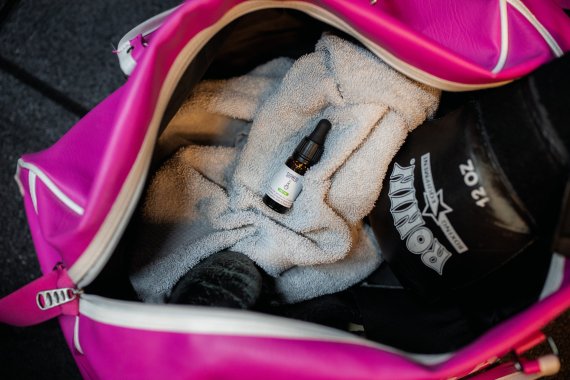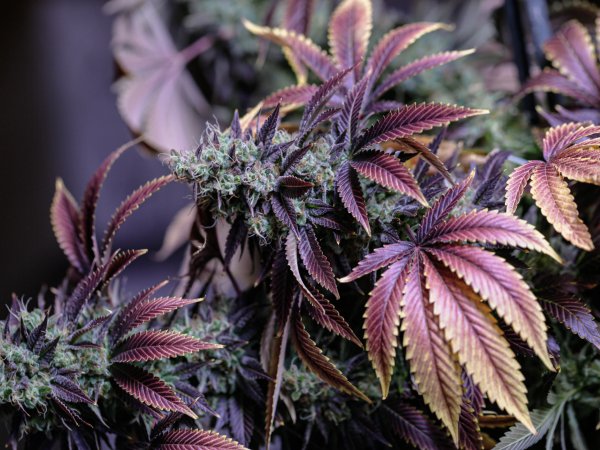330 billion dollars - that's the global turnover in the drug trade. An incredible sum. So why not make at least part of it a legal market and profit economically? Some countries are already showing how it can be done:
1. USA: Prime examples from the USA show how successfully companies are using the green gold. Marijuana has already been legalized in 22 states, giving 158 million people access to the high. Sales amounted to 25 billion US dollars in 2021. The Cannabis Data Company BDSA assumes that sales of cannabis in the USA will continue to rise and could reach 40 billion dollars by 2026. A real growth market. One of the world's most successful cannabis companies comes from the USA - Curaleaf. The market capitalization of the brand is a whole 3.46 billion dollars.
2. The Netherlands: The Netherlands is the global pioneer when it comes to legalization. It has been possible to buy cannabis in coffee shops since 1976. And the market is booming here too: In 2023, sales are expected to reach 12 million euros with an annual growth rate of 15.7 %. By 2028, sales are expected to reach 2.5 million euros. While consumption is legal, the supply chain, i.e. cultivation and wholesale, is not yet - forcing coffee shops to purchase the products illegally.
3. Thailand: There is also movement in the cannabis market in Asia. Thailand was the first Asian country to legalize cannabis in 2022 - at least for industrial and medical use. However, since marijuana is no longer on the list of illegal drugs, consumption is possible. One important reason: legalization is intended to boost the economy, which has been weakened by the pandemic. The government has even given one million hemp plants to private households with the aim of supporting production. The market is seen as a megatrend and many companies are already investing. According to forecasts by Cannabis Catalysts, a turnover of 1.8 billion US dollars can be expected.
It is one of the oldest useful plants: Hemp, also known as cannabis, hashish or marijuana. Various cultures have been using the diverse properties of the plant for thousands of years - from ropes made from its fibers, to oil from the seeds, to intoxicants from the dried flowers and leaves. Today, hemp is already being used successfully: Not only in the textile industry - sports brands are also using the material for innovative products, as ISPO Award winner Leki proves.
But what is actually in this much-discussed plant? It contains 750 chemical substances, around 100 of which are cannabinoids. A substance that also occurs in the human body as an endocannabinoid. Of the cannabinoids contained in the cannabis plant, very few are psychoactive - only the active ingredient tetrahydrocannabinol (THC) is intoxicating.
In the future, cannabis is likely to move further into the spotlight, because things are about to get serious: legalization is progressing in many countries.
4. Spain: A role model for German legalization: Since the 1990s, cannabis lovers in Spain have been consuming cannabis in so-called cannabis social clubs thanks to a loophole created by legalization activists. Full legalization is already being discussed. Use for medical purposes has been permitted since 2022 and will generate a turnover of around 20 million euros in 2023.
5. Canada: Legal high has been possible in Canada since 2018, showing how successful the market can be. According to forecasts, total sales will amount to 3.6 billion euros in 2023 and grow to 7.7 billion euros by 2028. The two most successful companies include Tilray and Aurora Cannabis. The stock market values of both brands speak for themselves: Tilray is worth 872 million euros and Aurora 181 million euros.
6. Germany: Since April 1, 2024, the consumption of cannabis has been legal in Germany. With partial legalization, exclusive cannabis clubs for the legal kick and strict rules against the black market. It will be official from July - chill out, but with rules!
Will legalization lead to us being surrounded by a pandemic of pot-smoking potheads? Probably not. In 2018, the European Monitoring Center for Drugs and Drug Addiction in a report on cannabis legislation stated: "No simple correlation can be found between legislative changes and the spread of cannabis use."
Instead, legalization has a positive impact on many different areas:
- Increase in tax revenue: Overall, the legalization of cannabis in Germany could lead to the state taking in around an additional 4.7 billion euros. In Spain, legalization is expected to generate 3 billion euros in taxes and social security contributions.
- Creation of new jobs: Competition economist Prof. Dr. Justus Haucap from the Düsseldorf Institute for Competition Economics (DICE) at Heinrich Heine University Düsseldorf (HHU) assumes that legalization will create around 27,000 legal jobs.
- Strengthening the healthcare system: Cannabis is already used in medicine as a treatment, for example for chronic pain. Legalization would facilitate access to medical marijuana and promote research into it.
- Promoting tourism: Around 1.5 million tourists visit the coffee shops in Amsterdam every year. Legalization could also promote gastronomy in Germany's major cities.

Another important aspect is that cannabis opens up a new market for original business concepts and start-ups. New companies can emerge that specialize in the production, processing and consumption of cannabis, while existing brands can expand their product range.
Prime examples from the USA show how successfully companies are using the green gold. Marijuana has already been legalized in 22 states, giving 158 million people access to the high. Licensed cannabis brands provided more than 100,000 jobs in 2021. One year later, there were almost half a million employees. And the turnover? It amounted to 25 billion US dollars in 2021. The Cannabis Data Company BDSA assumes that sales of cannabis in the USA will continue to rise and could reach 40 billion dollars by 2026. A real growth market then.
Following legalization, the cannabis industry experienced a great deal of hype in the various countries. In some places, the gold-rush mood is now being followed by a phase of consolidation. Take Canada, for example: In Canada, billions of dollars have been invested in production and expansion, only to now see overcapacity. According to the Canadian Ministry of Health, 468 tons have even been destroyed. The biggest brands are suffering in particular, as the share prices of Tilray, Canopy Growth and Aurora Cannabis have fallen enormously over the past year.
A new glimmer of hope on the horizon of German drug policy: now that the Federal Council has approved the controversial law on the partial legalization of cannabis, new prospects are opening up for consumers and the economy. This historic decision, which allows consumption, possession and cultivation to a limited extent, could significantly increase the potential demand - far beyond the previous estimates of 400 tons per year. While the question of the feasibility of importing under the strict international agreements remains, this legislative progress should open up new growth opportunities, especially for established players such as Tilray and Aurora Cannabis. These companies, which already play a leading role in the medical cannabis sector in Germany, could now be on the cusp of even wider market acceptance.
And where does the rest of the cannabis medicine for the German market come from? Out of around 25,000 cultivation licenses worldwide, only 20 producers have a license to import into Germany. One of these companies is Cantourage from Berlin. Its co-founder Patrick Hoffmann is certain: "In the coming years, there will be a strong demand for cannabis medicines and recreational products both in Germany and in the European Union."
Cantourage is already working with 19 partners from 14 countries, including Canada and Israel, as well as Lesotho, South Africa, Uganda and Zimbabwe. The company sources the raw material from them and imports it to Germany for further processing as a licensed company. "Africa has a responsibility to play a leading role in the cultivation and processing of cannabis," says Hoffmann. This is the only way to meet the growing demand.
Auriey: Cannabis accessories with style
Auriey has been inspired by the USA and is already tilling the field for the new market. The Munich-based company is creating a real lifestyle trend with its stylish smoking accessories: no more ordinary headshops or bongs with kitschy cannabis leaf designs! "We looked around the American and Canadian markets. There is a whole other world around cannabis there. And we took that as our model," Anna Grafe-Busch and Philipp von Frankenberg, the founders of Auriey, tell ISPO.com. With modern and aesthetic bongs, grinders, pipes, papers and other paraphernalia, they show how noble the consumption of cannabis can be. They are fighting to change the cliché of unmotivated stoners and the supposed danger of hashish as a gateway drug in society. Anna: "You don't have to be a stoner to smoke weed. You can just smoke a joint from time to time."
Auriey's stylish accessories are already being well received, and Anna and Philipp see a good chance that demand for cannabis legalization will increase significantly. "This is something that is completely new. It's never been done before: decriminalizing something that has been declared a drug after almost 100 years and making it a stimulant. That is unique."
So it pays to be prepared! Above all, the trend reversal from scene drug to lifestyle could be exciting: "We are deliberately positioning ourselves as a lifestyle brand. After all, cannabis could develop in the same way as the skateboard market, for example, where brands such as Supreme have expanded into fashion or other lifestyle areas independently of sport. That's what we're counting on."
Naturali CBD: opportunities for CBD stores
"There is an incredible amount of potential," reveals Philipp Raabe, co-founder of Naturali CBD. As a CBD store, they already sell legal cannabis products - from flowers to hash and oils. Philipp has noticed an ever-increasing demand from customers: "Interest is extremely high. We're getting more and more requests for seeds, seeds or weed containing THC." Many companies are ready and willing to add products to their range immediately. "Since you are not allowed to buy from suppliers before legalization, it will probably take several weeks and then the stores and the business with THC products will boom." The expert anticipates immediate sales growth of 40 percent, which will level off at a plus of 20 to 30 percent after the initial euphoria.
It is precisely through legalization that the quality of cannabis can be ensured through state controls and consumers do not run the risk of buying diluted and contaminated substances.
Naturali is already in contact with various companies that currently produce medicinal cannabis. "Their plants have stable genetics and are very safe." According to Philipp Raabe, a sustainable and local source of supply could also develop from the non-profit cultivation of the future Cannabis Social Clubs (CSC). The prerequisite is that the relevant expertise is built up there and quality control is established to ensure that products do not contain any fertilizer residues or other impurities. Philipp is certain: "CBD stores may have a better starting position in terms of licensing than companies that are just starting out in the industry."
Booth of legalization in various EU countries
- Austria: Legalization of cannabis is currently ruled out
- Switzerland: Switzerland legalized cannabis for medical purposes in 2022. There are pilot projects for legalization for recreational purposes.
- France: Legalization for recreational purposes is also not planned in France. Pilot projects for medical use are underway here.
- Czech Republic: Cannabis is illegal as an intoxicant in the Czech Republic. It may be prescribed for medical purposes.
- Italy: The consumption of cannabis is not permitted in Italy. However, the cultivation of hemp as a raw material (without THC) has been possible since 2016.
- Sweden: Sweden has a zero-tolerance drug policy. Only CBD products without THC content are legal.
According to a research report, 9.3 percent of 12 to 17-year-olds in Germany have used cannabis at least once. A full 50.8 percent of 18 to 25-year-olds have done so. But what does it actually do to the body? Despite some benefits, cannabis, like alcohol, can cause considerable damage to health - especially for young people and adolescents. For them, consumption can lead to brain development disorders, which can result in reduced attention, poor memory and an increased risk of mental illness, such as schizophrenia, depression or anxiety disorders.
Smoking cannabis is particularly problematic. Numerous toxic and cancer-causing substances are released, which can damage the lungs. The American Lung Association therefore clearly warns against the consequences of smoking marijuana. Cannabis can also affect the cardiovascular system, especially at high doses. Pulse and high blood pressure increase, blood vessels dilate. With regular use, there is a risk of permanent cardiac arrhythmia and vascular damage.
It is unclear whether there is a risk of psychological dependence through regular use, as is the widespread opinion that cannabis is a gateway drug for harder drugs.
One promising application of cannabis is in the treatment of chronic pain. Cannabis is said to be able to reduce the perception of pain and inhibit inflammation. This makes it a possible alternative for patients who do not respond sufficiently to conventional painkillers or have to deal with side effects.
Cannabis is also used to treat certain neurological disorders such as epilepsy. It has been shown to be effective in reducing the number of epileptic seizures. Another promising aspect of cannabis is its potential role in the treatment of anxiety disorders and depression. It has been linked to an improvement in mood and a reduction in anxiety, without the psychological side effects of conventional medication.
In addition to its potential medical benefits, cannabis also has effects on the endocannabinoid system, which plays a role in regulating various bodily functions. It can help promote relaxation and stress reduction.
The discussion about the influence of cannabis on athletic performance has gained momentum in recent years. The case of American sprinter Sha'Carri Richardson in particular has made the sporting world sit up and take notice. She was excluded from the 2012 Olympic Games due to a positive test for THC.
According to the World Anti-Doping Agency (WADA), the drug is an illegal doping substance. And not just because of its anxiety-relieving effect: according to WADA, cannabis endangers health and violates ethics, sportsmanship, honesty and fair play.

But does cannabis really boost performance? Most studies come to the same conclusion: No. Endurance and strength, important elements in most sporting disciplines, are not directly positively influenced by the consumption of marijuana. However, it does indirectly: the anxiolytic effect, muscle relaxation, reduced pain perception and deep sleep are all effects of the plant that can support athletes under pressure, training stress, injuries or anxiety. Especially in high-risk sports.
Consumption is also widespread in other areas, for example to support regeneration. In the NFL, for example, 89 percent of players use marijuana, according to footballer Martellus Bennet. NBA players are now even allowed to smoke weed with impunity.
However, strong side effects can occur. Consumption can lead to dizziness, drowsiness and coordination problems, increase blood pressure and heart rate, slow down reaction times and disrupt the sense of time. Side effects that increase the risk of injury. What's more, cannabis contains numerous toxic substances that can lead to lung damage when smoked. Certainly not something that athletes crave.

 Sports BusinessSki Mountaineering Goes Olympic: What Milano-Cortina 2026 Means
Sports BusinessSki Mountaineering Goes Olympic: What Milano-Cortina 2026 Means
- ISPO awards
- Mountain sports
- Bike
- Design
- Retail
- Fitness
- Health
- ISPO Job Market
- ISPO Munich
- ISPO Shanghai
- Running
- Brands
- Sustainability
- Olympia
- OutDoor
- Promotion
- Sports Business
- ISPO Textrends
- Triathlon
- Water sports
- Winter sports
- eSports
- SportsTech
- OutDoor by ISPO
- Heroes
- Transformation
- Sport Fashion
- Urban Culture
- Challenges of a CEO
- Trade fairs
- Sports
- Find the Balance
- Product reviews
- Newsletter Exclusive Area
- Magazine




